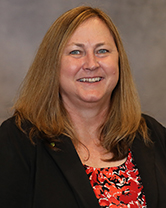 The census of fatal occupational injuries from the U.S. Bureau of Labor Statistics (BLS) always prompts me to reflect on our mission as OSH professionals to help people return home safely to their loved ones each workday. It also is a stark reminder that many obstacles to improving worker safety remain.
The census of fatal occupational injuries from the U.S. Bureau of Labor Statistics (BLS) always prompts me to reflect on our mission as OSH professionals to help people return home safely to their loved ones each workday. It also is a stark reminder that many obstacles to improving worker safety remain.
The most recent BLS data, which you can view at assp.us/BLSData, show 3.6 fatalities occurred per 100,000 full-time equivalent (FTE) workers in 2021, the highest annual rate since 2016. Beyond this disheartening increase among all workers, the data shed light on some troubling trends among several worker populations. Consider these facts from BLS:
- The fatality rate for Black workers increased from 3.5 per 100,000 FTE workers in 2020 to 4.0 in 2021. The fatality rate for Hispanic/Latino workers was 4.5, also significantly above the national average.
- Transportation incidents were the highest cause of fatalities within these groups.
- Nearly 24% of fatalities among Black workers were due to violence and other injuries by persons or animals, significantly higher than the 14.7% among all workers. Among Hispanic workers, slips, trips or falls were the second leading cause of death on the job.
- Women made up 8.6% of all workplace fatalities but represented 14.5% of those killed due to intentional injuries by a person.
- Workers between the ages of 45 and 54 suffered 1,087 workplace fatalities, a 13.9% increase from 2020. This age group accounted for nearly 21% of the total of fatalities for the year.
As these data indicate, women, Black and Hispanic/Latino workers, and workers between the ages of 45 and 54 are often exposed to greater workplace risks. This can lead them to experience a disproportionate number of fatalities. These disparities are influenced by a wide range of factors, including socioeconomics, cultural differences, gender, age, language and knowledge barriers, and job characteristics.
These issues have been the focus of significant research that highlights issues organizations must address more effectively to better protect the increasingly diverse workforce. For example:
- In its recent report, “Underlying Causes of Falls From Height” (https://bit.ly/3HopPWj), CPWR—The Center for Construction Research and Training says “there was a significant association between fatal falls and whether an individual’s native language was English or Spanish. . . . The odds of a fall being fatal were 53% lower for native English speakers compared to native Spanish speakers or those who spoke another language.”
- In 2015, we partnered with NIOSH on research presented in the report “Overlapping Vulnerabilities: The Occupational Health and Safety of Young Immigrant Workers in Small Construction Firms” (https://assp.us/OverlappingVulnerabilities). The report concludes that “social dynamics such as race, class and gender; economic trends such as the growth of the temporary workforce; and organizational factors such as business size can contribute to the greater vulnerability of some workers to workplace illness or injury.”
- In our “Women and Safety in the Modern Workplace” report (www.assp.org/womensreport), we note that fields with a largely female workforce such as nursing, social work, retail and education tend to have less controlled work environments, creating easier access to perpetrators of violence. In addition, NIOSH research indicates that nearly one-third of women murdered at work are killed by intimate partners.
A key step in addressing these concerns is understanding the makeup of your workforce. As researcher Michael Flynn says in “Safety and the Diverse Workforce” (Professional Safety, June 2014), “To effectively promote OSH among workers, a company must understand the diversity that currently exists in the workforce and how workers approach on-the-job safety.”
Most occupational incidents are preventable given today’s technologies and proven safety and health strategies, many of which are captured in modern consensus safety standards and industry best practices. As OSH professionals, we must find innovative ways to engage our corporate leaders and our employee teams to identify risks, then we must design the work to maximize the safety and health of all employees.